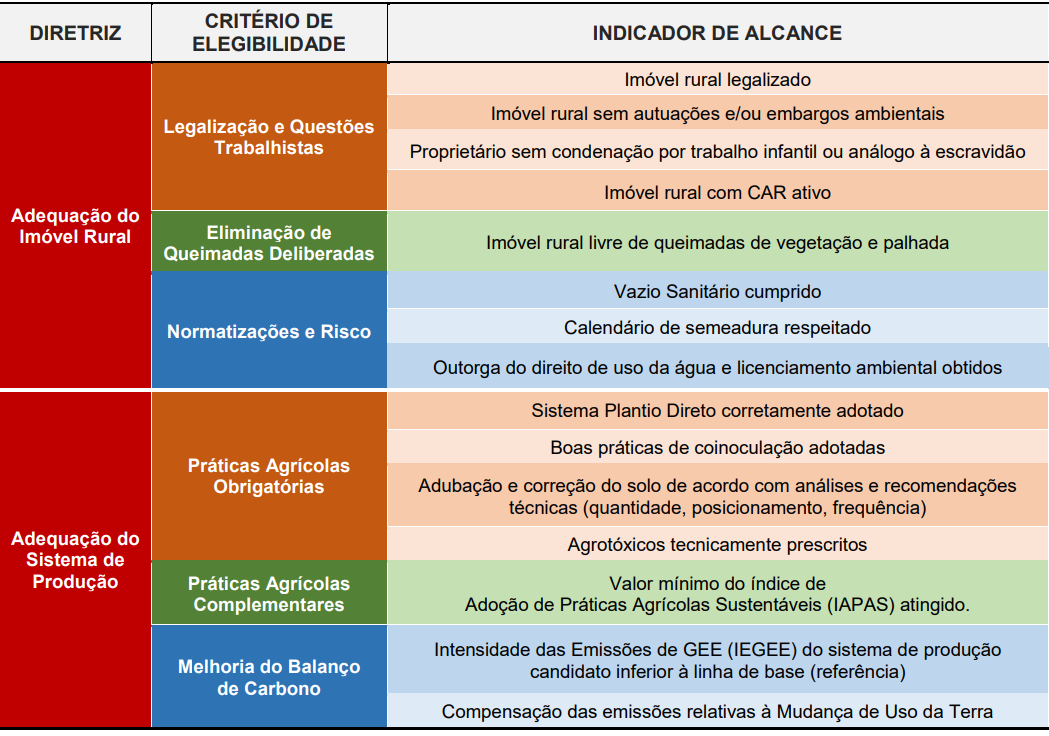The Technical Certification Guidelines (TCGs) for obtaining the concept-brand
seal contain the premises for attesting to the greenhouse gas emissions
(GHGs) mitigation in the agricultural production process in candidate areas.
These Technical Guidelines structure the entire certification process and serve
as the basis for the certification protocol and checklist used in practice to
evaluate and award the Low Carbon Soy Seal by accredited certifiers. That is a
constructive dynamic process in constant evolution, so, after field validation, the
technical guidelines are updated in a new approximation, which is then
published.
Following recommendation of the ISEAL Alliance Code of Good Practices for Setting Social and Environmental Standards (ISEAL, 2014), the TGCs were structured by experts, including researchers and representatives of the production sector, among other stakeholders. Based on a careful analysis of the information compiled, a structure focused on mitigating GHG emissions was created, which includes two Technical Certification Guidelines (TCGs): (1) Adequacy of the Rural Property and (2) Adequacy of the Production System. Each TCD has Eligibility Criteria and Achievement Indicators that the candidate area must attain to receive the LCS Seal.
Following recommendation of the ISEAL Alliance Code of Good Practices for Setting Social and Environmental Standards (ISEAL, 2014), the TGCs were structured by experts, including researchers and representatives of the production sector, among other stakeholders. Based on a careful analysis of the information compiled, a structure focused on mitigating GHG emissions was created, which includes two Technical Certification Guidelines (TCGs): (1) Adequacy of the Rural Property and (2) Adequacy of the Production System. Each TCD has Eligibility Criteria and Achievement Indicators that the candidate area must attain to receive the LCS Seal.
Technical Guidelines for Certification
Rural Property Adequacy
Eligibility Criteria
Location And Labor Issues
Scope Indicator
Rural property without environmental fines and/or embargoes
Owner without convictions for child labor or slavery-like practices
Rural property with active Brazilian Rural Environmental Registry
Elimination of Deliberate Burning
Scope Indicator
Regulations and Risk
Scope Indicator
Sowing calendar respected
Water use rights authorization and environmental licensing obtained
Production System Adequacy
Eligibility Criteria
Mandatory Agricultural Practices
Scope Indicator
Good co-inoculation practices adopted
Correction and soil fertilization and according to technical analysis and recommendations (quantity, placement, frequency)
Pesticides used according to technical prescriptions
Additional Agricultural Practices
Scope Indicator
Improvement in Carbon Balance
Scope Indicator
Compensation for emissions related to Land Use Change


